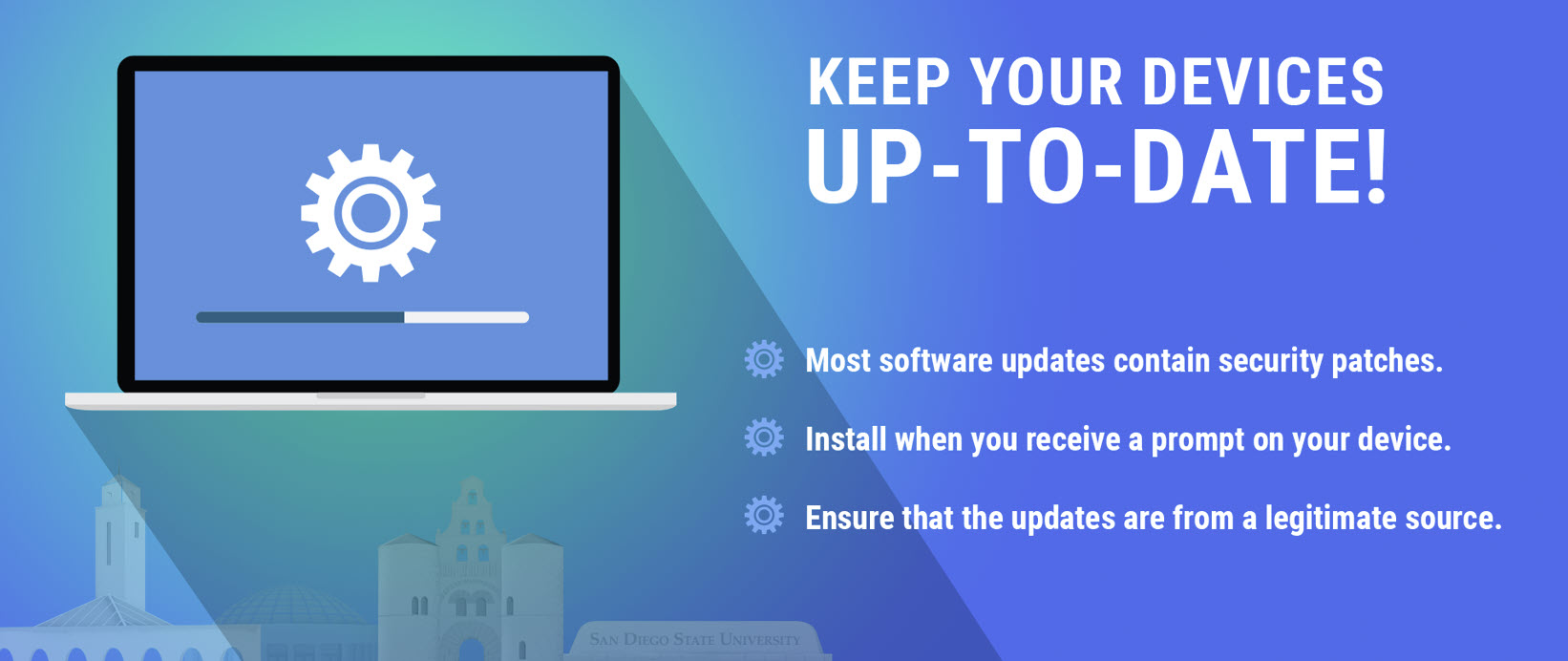Software Updates
“Remind Me Later”
The next time you are tempted to click “Remind me later” when seeing a software update on your computer or phone, remember these statistics:
- Vulnerability exploitation surged by nearly 3X (180%) since 2023 (2024, Verizon Data Breach Investigation Report)
- 14% of all breaches result from exploitation of vulnerabilities as an initial point of entry (2024, Verizon Data Breach Investigation Report)
- It takes organizations 55 days to remediate 50% of critical vulnerabilities following the availability of patches. Meanwhile, the median time for detecting the mass exploitations on the internet is five days. (2024, Verizon Data Breach Investigation Report)
One of the simplest and most effective ways to protect yourself and your organization is by regularly updating your software. However, many people still overlook this critical step, which leaves systems vulnerable to attacks.
Why Software Updates Matter
Every piece of software, whether it's your operating system, a mobile app, or business application, is at risk of being targeted by cybercriminals. Outdated software contains vulnerabilities that attackers can exploit to gain unauthorized access to your data or network. By keeping software up to date, you’re ensuring that these vulnerabilities are patched and that your systems are more secure.
- Patching Vulnerabilities: Software updates often include patches that fix known security issues. These vulnerabilities are like open doors, inviting cybercriminals in to exploit weaknesses.
- Improving Functionality & Performance: Beyond security, updates often include improvements to the software’s performance, reliability, and feature sets.
- Preventing Data Breaches: The 2023 Verizon Data Breach Investigations Report highlights that 78% of cyber attacks target vulnerabilities with patches already available, underscoring the importance of timely updates.
Three Simple Steps
The Cybersecurity and Infrastructure Security Agency (CISA) advocates that users think twice before putting off updates! Here are three best practices for keeping software up-to-date:
- Watch For Notifications. Our devices will usually notify us that we need to run updates. This includes our devices’ operating systems, programs and apps. It’s important to install ALL updates, especially for our web browsers and antivirus software.
- Install Updates As Soon As Possible. When notified about software updates, especially critical updates, we should be sure to install them as soon as possible. Malicious online criminals won’t wait, so we shouldn’t either!
- Turn On Automatic Updates. With automatic updates, our devices will install updates without any input from us as soon as the update is available—Easy! To turn on the automatic updates feature, look in the device’s settings, possibly under Software or Security. Search settings for “automatic updates” if needed.
Get Help
To request a service, please submit a ticket via ServiceNow.
Report an Incident
Please contact the Information Security team immediately if you experience or are aware of any of the following:

